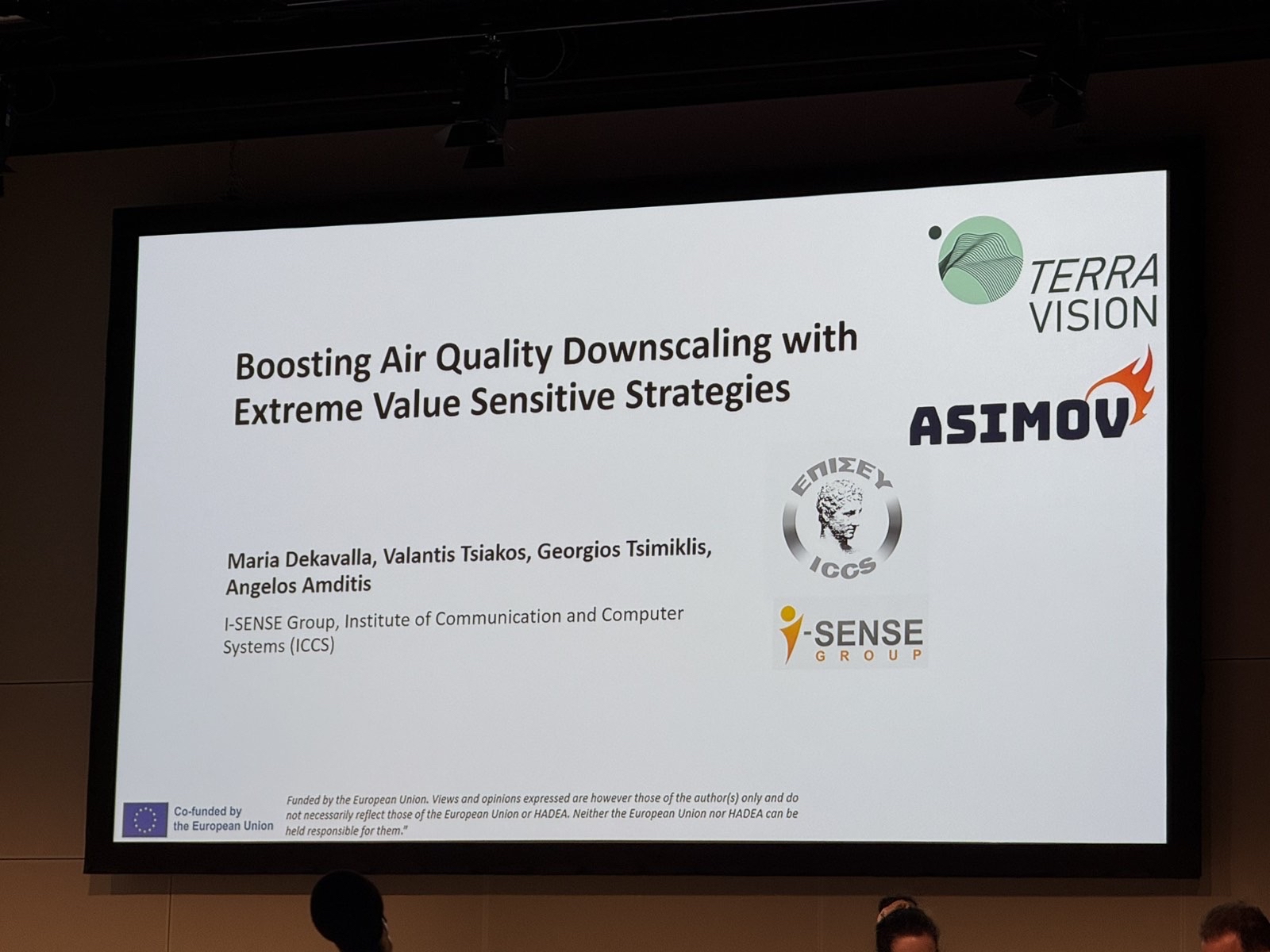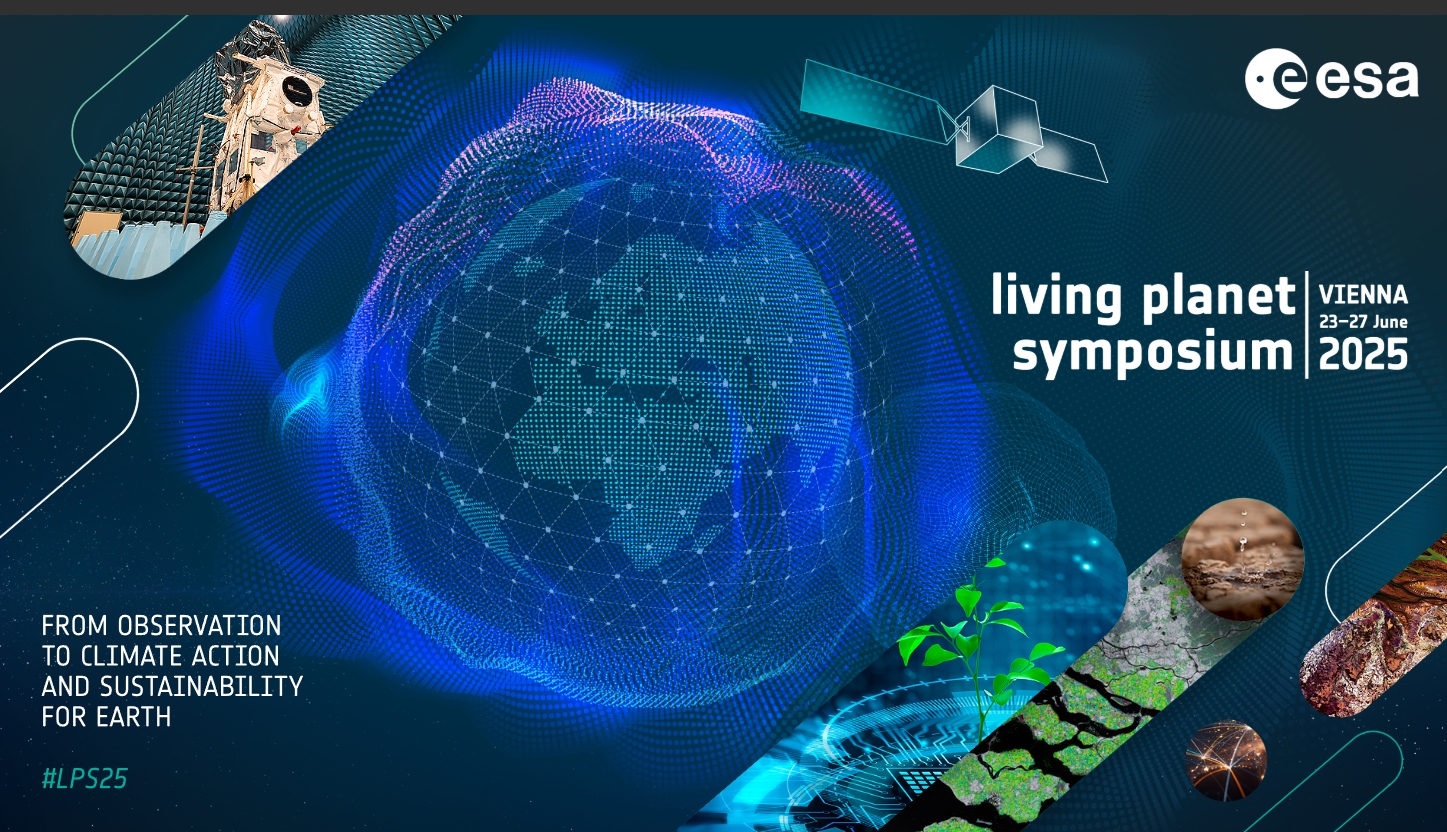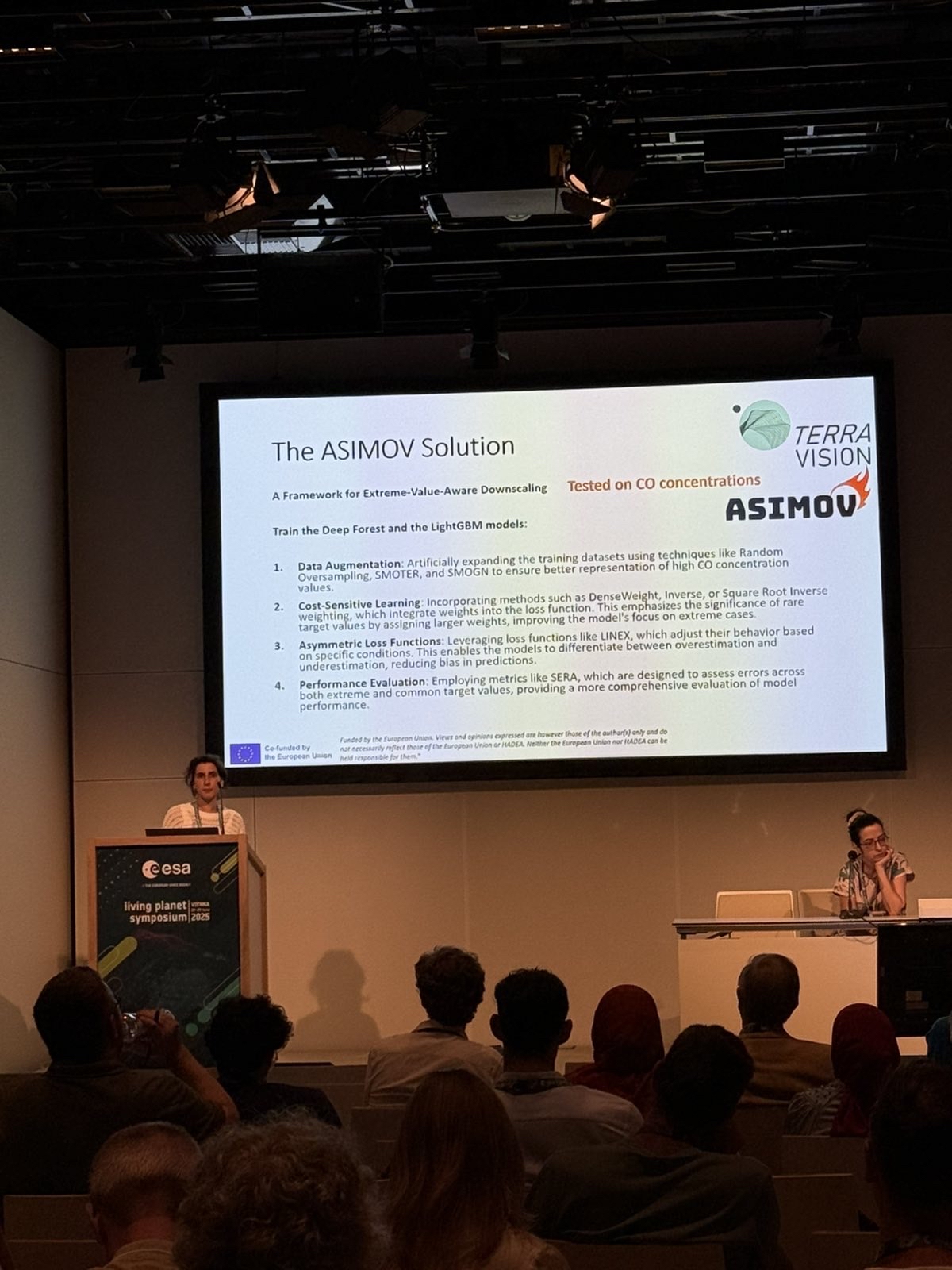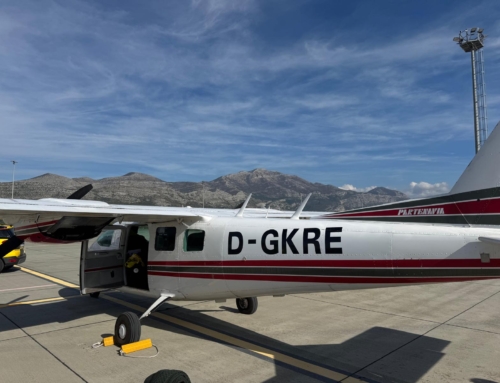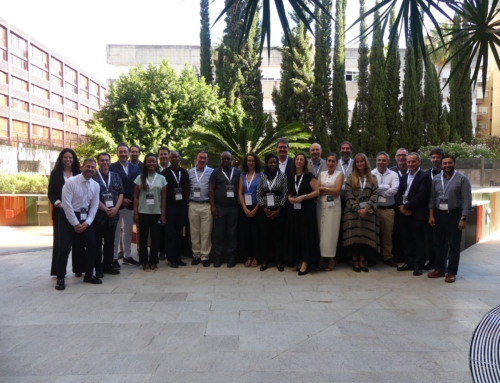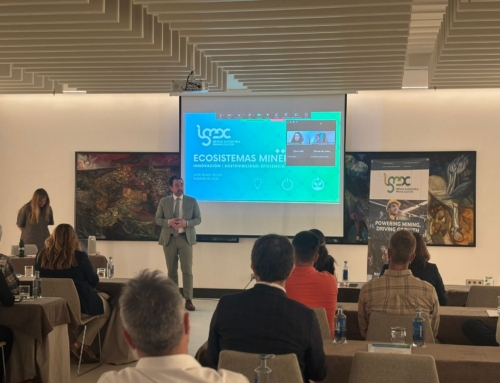TERRAVISION at the European Space Agency – ESA Living Planet Symposium 2025
During the last week of June, one of the biggest Earth Observation events took place, and TERRAVISION was there!
Maria Dekavalla, researcher at project coordinator I-SENSEGroup/ICCS , presented key insights from the project.
Her oral presentation focused on TERRAVISION’s innovative approach to supporting the mining industry in monitoring air pollutant emissions; essential for compliance with EU regulations, safeguarding public health, and advancing sustainability goals.
While existing monitoring tools, such as ground-based sensors, drones, mobile units, and satellites, offer valuable data, each has limitations. In particular, satellite data lacks the fine spatial resolution required to reliably estimate ground-level pollution, especially in remote or industrial regions.
To overcome this, TERRAVISION introduces a novel machine learning framework that fuses data from multiple sources, including:
- Sentinel-5P satellite observations
- ECMWF ERA5-Land weather reanalysis data
- Ground station measurements from the European Environmental Agency
Using ensemble learning methods like Random Forests, XGBoost, Support Vector Regression, and Neural Networks, the framework is designed to accurately predict air pollution concentrations at high resolution.
What truly sets TERRAVISION apart is its focus on detecting extreme pollution events—a major challenge in the field. Through advanced training strategies such as oversampling, cost-sensitive learning, and tailored loss functions, the models are better equipped to capture rare, high-pollution episodes. Evaluation using metrics like Geometric Mean and SERA ensures robustness in these critical cases.
By improving the accuracy and reliability of air quality predictions, TERRAVISION helps enable data-informed environmental monitoring and policy-making, especially in industrial and high-risk areas.
We thank ESA for the opportunity to share our work and look forward to continued collaboration across the Earth observation and environmental science communities.


